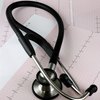Coronary heart disease is the number 3 killer in the United States. Mild or severe, a heart attack requires immediate treatment and medical intervention. Signs and symptoms vary and are often different for women than for men. Some heart attacks strike quickly and severely (like those on television or in the movies) others are milder in nature and with more vague symptoms. Receiving rapid medical attention for a mild heart attack is crucial for long term survival and to minimizing any further damage to your heart.
General Symptoms
Symptoms of mild heart attacks often differ from patient to patient but generally include pain or pressure in the chest, anxiety, shortness of breath and nausea. Chest discomfort can range from a tight feeling, pressure, aching or squeezing in the center of the chest which lasts for more than a few minutes and may be intermittent. That discomfort may radiate to other areas of the upper body. Pain may also take on a heartburn-like quality in the abdomen. A cold clammy sweat, lightheadness, a sense of panic or doom and a feeling of needing to either pant or deeply breathe to catch your breath are all typical symptoms of a heart attack.
Symptoms in Women
Many women experience none of the usual symptoms of a heart attack. Some experience all or a few of those listed above. In general, the most common symptom of a mild heart attack is pain, discomfort or pressure in the chest. Women are, however, more likely to have other symptoms like: • Pain in the neck, shoulder, jaw, upper back and/or abdomen • Nausea/vomiting • Shortness of breath • Sweating • Heartburn • Feeling of dizziness • Abnormal fatigue
Diagnosis
Diagnosing a heart attack involves several tests. Your doctor will need a complete medical history and examination. You will also be given an electrocardiogram (or EKG) to show the medical staff if you have any damage to your heart (it picks up abnormalities and anomalies by recording your heart’s electrical activities). Doctors also will need a blood test to determine if you have had a heart attack. The tests will reveal any markers to indicate heart damage or abnormalities in your cardiac enzymes.
Treatment
Medical therapy like reperfusion therapy (which restores blood flow) is often a first line of treatment once you’ve reached the hospital. Thrombolysis is a treatment in which a medication like streptokinase or urokinase is injected into the blood stream to dissolve a clot. This also utilizes medication to dissolve blood clots. PCI (percutaneous coronary intervention) is often considered the first treatment for an STEMI (a specific type of heart attack which occurs when one of the coronary arteries is 100 percent blocked). Both thrombolysis and PCI aim to restore blood flow and prevent further damage or death of the heart muscle. Surgical intervention may be required depending on the severity of your condition.
Prevention
The American Heart Association teaches the ABCs of preventing heart attack: Avoid tobacco, Become more active and Choose good nutrition. A healthy lifestyle can go a long way to preventing both heart disease and stroke. Here are some of the risk factors for a heart attack: • Smoking • Poor nutrition (leads to high cholesterol, high blood pressure, diabetes, obesity) • High cholesterol (can be passed on from family members--important to have treated medically) • High Blood Pressure A healthy diet rich in fruits, whole grains, high-fiber foods and vegetables along with low fat dairy and lean protein helps to maintain a healthy weight and often have a positive impact on both cholesterol and blood pressure levels. Physical activity (recommended 30 minutes, 5 days per week by the American Heart Association) also is imperative for heart health.
References
Writer Bio
Caryn Anderson combines extensive behind-the-scenes writing experience with her passion for all things food, fashion, garden and travel. Bitten by the travel bug at the age of 15 after a trip to Europe, Anderson fostered her love of style and fashion while living in New York City and earning her degree at New York University.




